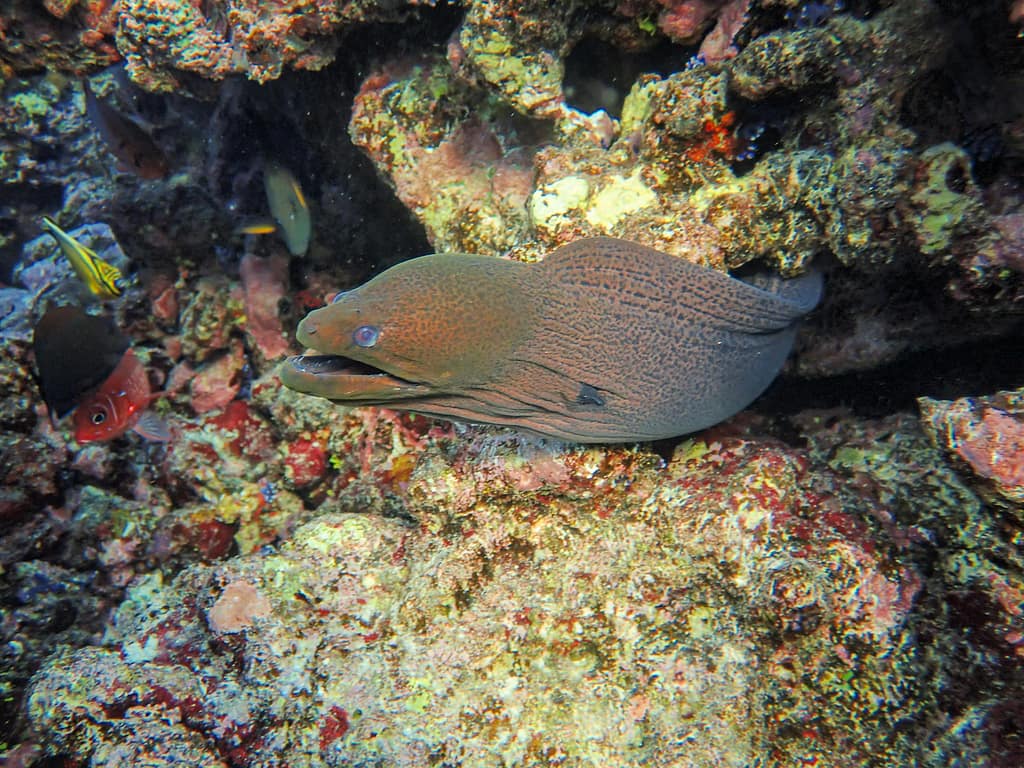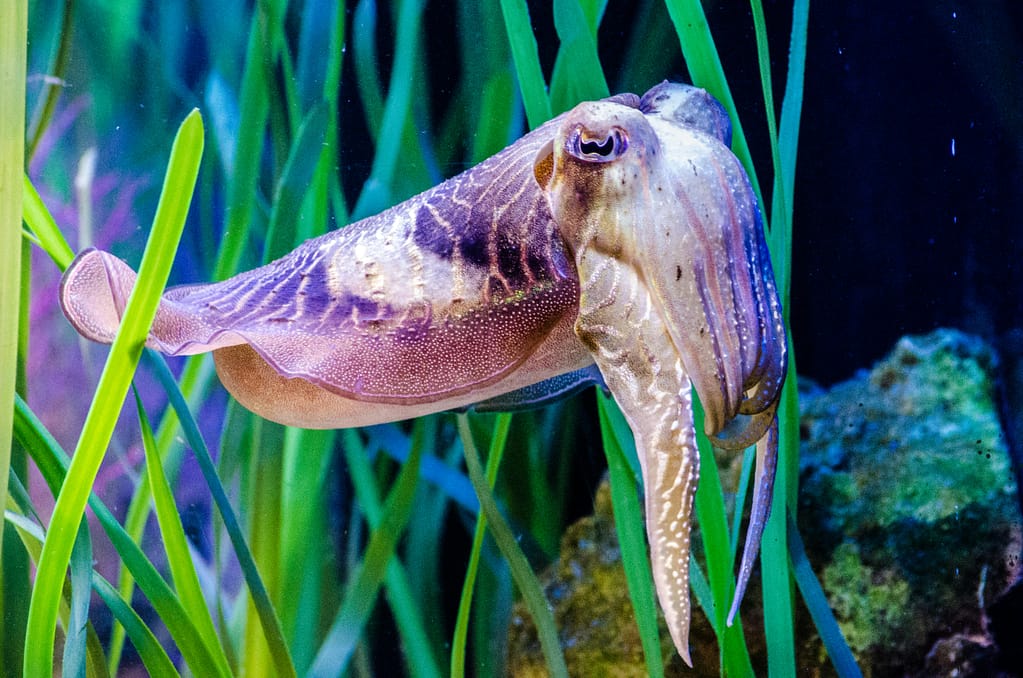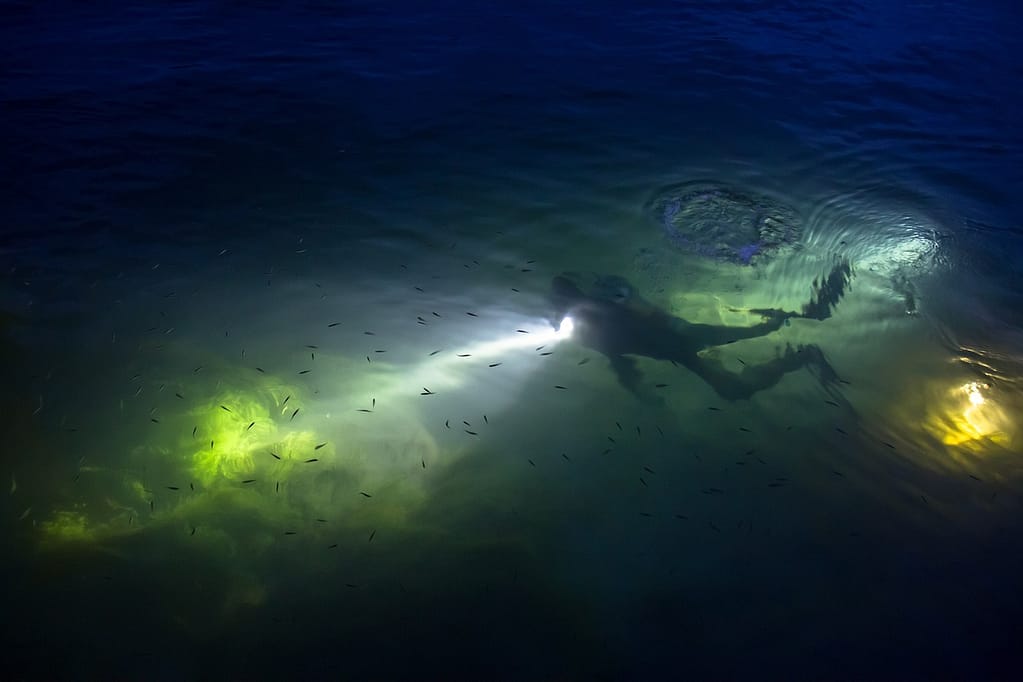Intro
Imagine diving in the dark into a completely different world.. Nighttime photography is one of the strangest but most adventurous genres in this art and grants photographers unique perspectives on marine life that simply do not occur under daylight conditions. Chasing bioluminescent displays and shooting shy, crepuscular or nocturnal behaviors opens up a new level of creativity in your underwater photography at night.
1. A Whole New World in the Dark
Nighttime underwater photography unveils a world completely unlike the one above it. Enabling you to photograph bioluminescence and night time marine behavior that would be impossible during the day. Definitely a rare experience.

2. The Draw of Night Dives
Night dives offer something special. While the ocean is bright and busy during the day, nighttime brings out deeper colors and more intense textures. Adding your own lighting lets you play with contrast and depth in ways daylight can’t match. It’s a fresh way to see the ocean’s beauty.
3. Opportunities for Spotting Unique Marine Life
At night, a lot of sea creatures come to life that you wouldn’t see otherwise. Moray eels and lobsters, for instance, come out to hunt when it’s dark. This lets you capture rare, natural moments that feel more intimate than what you’d see on a regular dive. This is my personally my favorite benefit..!

4. Vivid Colors and Sharp Details
Night photography’s controlled lighting brings out the colors in coral and marine life like nothing else. With lights up close, you’ll capture vibrancy and sharpness that’s hard to get in natural sunlight. For anyone after rich colors, night dives are an ideal choice.
5. Getting Creative with Light
Good lighting can make or break a night shot. Using a strobe or underwater flashlight lets you create interesting shadows and adds drama to your shots. Some photographers even try colored lights or experiment with different lighting angles to add something special.

6. The Magic of Bioluminescence
A highlight of night dives is capturing bioluminescent creatures like plankton and jellyfish. These organisms glow naturally, creating scenes that look like underwater light shows. Capturing these moments brings a real wow factor to your photos.
7. Finding Nocturnal Animals
Some creatures are only active at night, like cuttlefish and certain shrimp and crabs. Documenting their night behaviors adds unique shots to your portfolio. It’s also a chance to catch animals that might be hiding during the day.

8. Playing with Shadows and Composition
At night, you’re in control of all the light, which means you can highlight certain details and use shadows to create a more artistic look. The right composition brings out depth and contrast, which can really add interest to your images.
9. Staying Safe While Night Diving
With night dives, safety’s especially important. Bring plenty of light, stay in familiar waters, and always check your equipment carefully. When you’re prepared, night dives are not only safe but open up amazing photo opportunities.

10. Using the Right Gear
Night photography requires a bit of specialized equipment. A solid underwater camera and housing, plus adjustable lights with a wide beam, are key for getting close-up and medium shots. And don’t forget extra batteries—having a backup light is essential.
11. Adjusting Camera Settings
With night photography, you’ll want to focus on settings like exposure, sharpness, and color balance. Lower ISO settings keep noise down, and a faster shutter speed helps keep things clear. Many photographers also shoot in RAW to give themselves more flexibility with editing.
12. Mastering Light Positioning and Focus
Proper light placement is crucial for well-lit subjects. Practice different angles and distances for your lighting to bring out intricate details on coral and fish scales. Close-up shots can really benefit from this added clarity.

13. Editing to Enhance Night Photos
A little editing can help bring out the best in your night shots. Programs like Lightroom or Photoshop allow you to tweak brightness, contrast, and color saturation to bring out the underwater vibrancy. Subtle changes in sharpness and color grading keep things looking natural but vibrant.
14. Supporting Conservation Efforts
Nighttime photography can also contribute to marine research and conservation. Documenting nighttime marine life helps scientists understand these lesser-seen creatures and ecosystems, encouraging efforts to protect them.
15. Tips for First-Time Night Photographers
Preparation makes all the difference. Research your dive site, test your lighting, and bring a buddy with night-diving experience. The underwater world at night is full of surprises and can give you photos that are well worth the effort!




